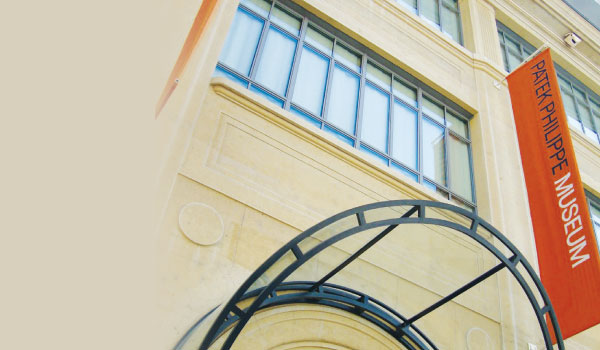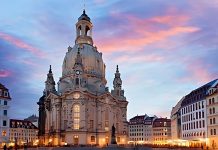Time-travel might not be mastered just yet. Until then, setting on a journey in search of timekeeping leaders can be worthwhile for watch enthusiasts.
Switzerland
The only thing you will run out of in Switzerland is time. One of the many regions worth seeing is the Watch Valley. In a span of three days, you can cover this tour by going west from Zurich and arcing towards Geneva. The entire region is eye candy.
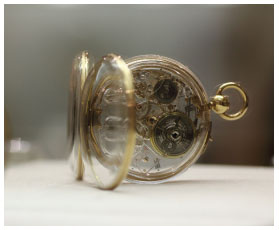 Known to be one of the most expensive cities in the world, Zurich is a good place to try on some exclusive Swiss watch models. Bahnhofstrasse is a fine shopping street. Stop in at Beyer Chronometrie Clock and Watch Museum and see models of the first ‘portable watches’ and clocks from primeval Europe.
Known to be one of the most expensive cities in the world, Zurich is a good place to try on some exclusive Swiss watch models. Bahnhofstrasse is a fine shopping street. Stop in at Beyer Chronometrie Clock and Watch Museum and see models of the first ‘portable watches’ and clocks from primeval Europe.
Take a train to Schaffhausen. You will see the Rhine Falls, the largest waterfall in Europe, on the way. IWC, or the International Watch Company, has a detailed museum. Schaffhausen has plenty of dining options in and around the city.
Known as the home of Omega watches, Biel is another train ride away. Although Rolex has a presence here, it is more importantly the home of the Federation of the Swiss Watch Industry. Not far way is La Chaux-de-Fonds, which is home to the esteemed watch companies Girard-Perregaux, Corum and Breitling.
The Musee de l’Horlogerie and the Patek Philippe Museum in Geneva boast amazing exhibits, like watches from the past 400 years. The United Nations building here is interesting, as is the Flower Clock. You will find the perfect Baume et Mercier or Tag Heuer at the Rue du Rhône.
Not on the map: Switzerland’s Watch Valley bursts with wine. Taste the fine Chassela white wine and Pinot Noir reds.
GERMANY
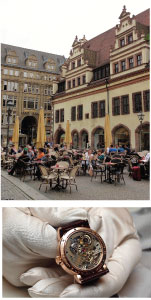 Look across the border of the Alpine nation to Germany and you will see a renaissance of some great names in watchmaking and some upstart brands. Pforzheim and Glashütte are at the fore of the timepiece industry.
Look across the border of the Alpine nation to Germany and you will see a renaissance of some great names in watchmaking and some upstart brands. Pforzheim and Glashütte are at the fore of the timepiece industry.
German watches are distinctively unique, often purpose-built, with innovations both outside and inside their cases. This should not be surprising given the reputation it has for its superb engineering and craftsmanship.
On the one hand, you have brands like Damasko and Sinn, who focus on the durability of their watches. On the other hand, the great watchmakers of Glashütte focus on movement innovation. The rich history of delicate and difficult decoration is still evident in the movements of A. Lange & Söhne.
You can see it for yourself at the factory locate din this small village 30 kilometres from Dresden, near the Czech border. The drive to Glashütte is amazing, with rolling green hills broken up by farms and forests. More than 10 watch companies straddle the main street of this quaint town known to be the birthplace of watchmaking in Germany.
Located in the Free State of Saxony, this region has everything from castles peering down from mountaintops to cobbled marketplaces and gothic churches.
Not on the map: Leipzig is a high-profile German city that has a more progressive, contemporary spirit. Often called ‘a little Paris’, it is home to Arko — the oldest coffee retailer in town (since 1879). This fabulous and eclectic building is worth a visit; the luscious beans make great souvenirs.
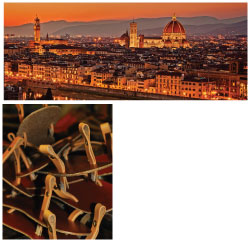 ITALY
ITALY
Considering the obsession that Italians have with their watches, it is not hard to imagine that a storied watchmaking tradition exists in the tourists’ haven.
One of the most popular names in the Italian watch industry is Gucci. While the fashion is ‘Made in Italy’, the technical stages of the development process are entirely carried out in the Gucci Timepieces atelier in Switzerland. Nevertheless, the factory located just outside Florence will give you an idea of Italian craftsmanship.
As you walk about Florence, spoil yourself or a loved one at Officine Panerai with one of their world-class watches. This purveyor of watches has a special place in Italian hearts. The watches were first produced for Italy’s navy divers in WWII. Nowadays the chunky nautical timepieces are collectors’ items. Upstairs, you can find a small archive with photos of Italian navy commandos and their deadly little manned torpedoes.
Let’s not forget Emporio Armani. Founded in Rome in 1884, Bulgari is another high-end brand that hails from Italy.
Not on the map: Unfortunately, most of these designer brands have their timepiece division in Switzerland. You can’t expect to take a tour of an actual factory. But you’re in Florence! Make the most of it.
The monthly Santo Spirito Organic Market attracts artisans and organic farmers from around Tuscany, with stands devoted to fresh produce, hand-painted crockery and spices gathered from Chianti hillsides.
Get shoes made exclusively for you at Francesco da Firenze. Hand-stitched leather is the cornerstone of this tiny family business specialising in ready-to-wear and made-to-measure men’s and women’s footwear.

























